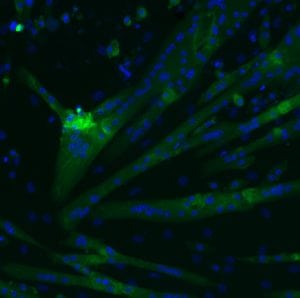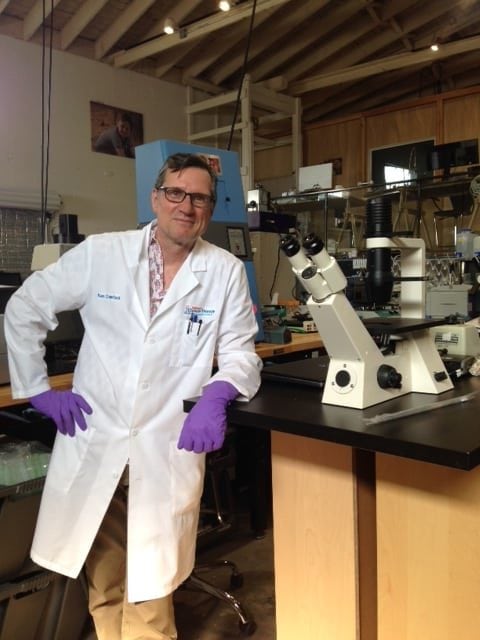Each week we will be featuring the work of a scientist on the cc-TDI team to give you a view into the lab and an update on our progress. While some might argue that the Science Fiction genre is the most imaginative view of the scientific universe, we would argue that some of the actual science happening in our lab might be even more innovative and imaginative…. Hence, we have decided to call this new blog series: Science Nonfiction. If you’re a Science Fiction fan (or even if you’re not), sit back and get ready to learn.
Take it away, Ken…
Two of the hallmarks of cancer are uncontrolled cellular growth/proliferation and the ability to move or metastasize. These attributes are normally governed by the differentiation process. Differentiation is the process in which a stem cell that can grow, divide, and move becomes a specific cell-type, or tissue, that no longer divides or moves.

I have been working on the skeletal muscle cancer rhabdomyosarcoma. In normal muscle cell differentiation, progenitor myoblast cells differentiate into myotubes (see image of fully-differentiated myotubes that was generated by me and Cora Ricker). In rhabdomyosarcoma this process is misregulated such that the cancer cells have a mixture of stem-like and muscle-like features. It has been reported, and I have confirmed, that drugs that inhibit the MEK enzyme and down-regulate the MAPK-pathway can induce rhabdomyosarcoma to have more of the muscle-like cellular features. This is exciting as it is potentially a new method of rhabdomyosarcoma therapeutic intervention – Differentiation Therapy. I have been exploring the utility of using MEK inhibitors to sensitize rhabdomyosarcoma to chemotherapy drugs.
I’m the most recent addition to the cc-TDI scientific staff, having started in March of this year. I have been using this project to learn many new lab techniques such as tissue culture, drug screens, and differentiation assay. I will soon be transitioning to a new rhabdomyosarcoma project where I’ll be able to apply this learning.
In closing, I’d like to thank my cc-TDI colleagues for welcoming me to the lab and helping me get started, as well as the St. Baldrick’s Foundation for their generous financial support.


